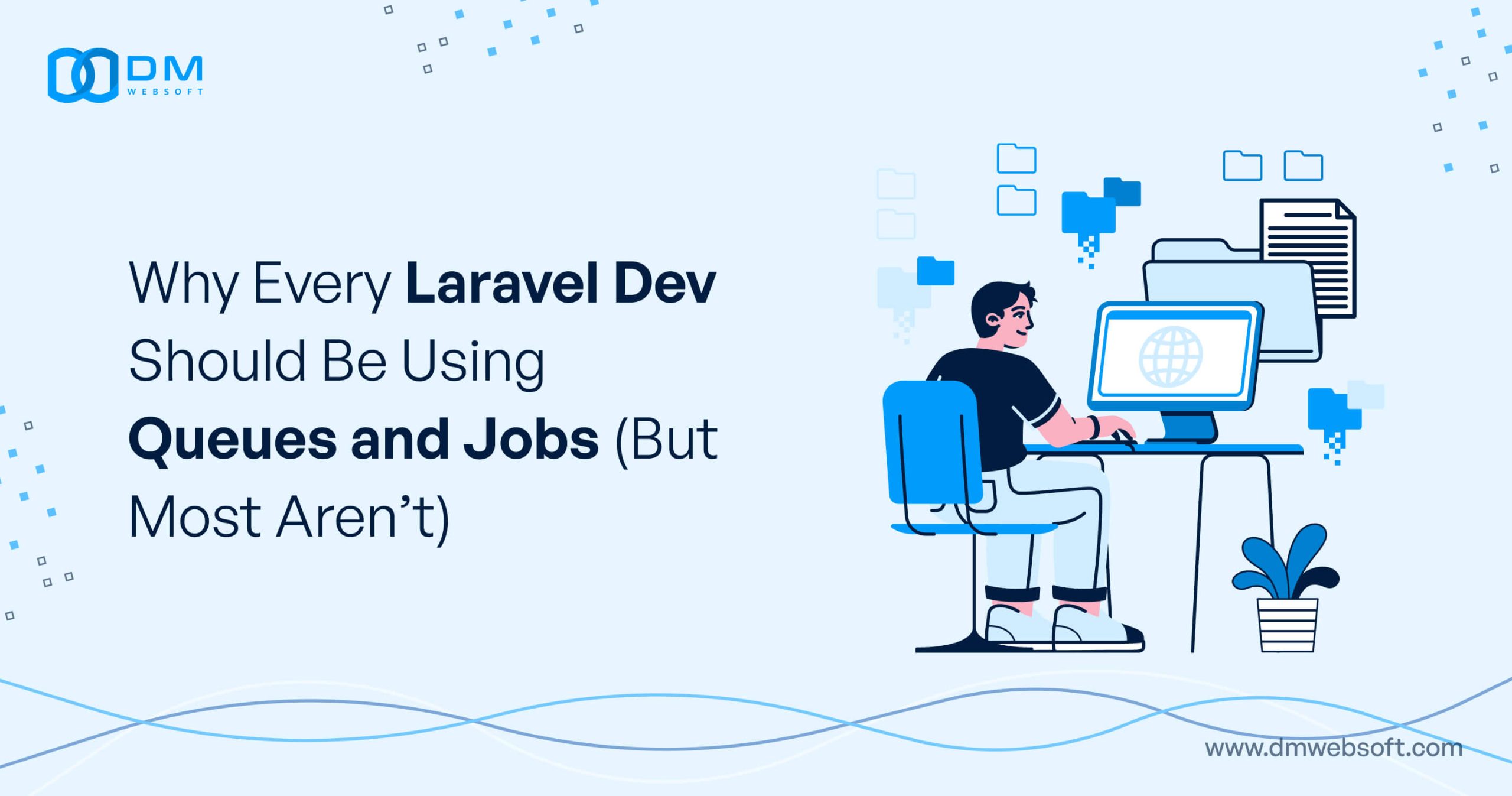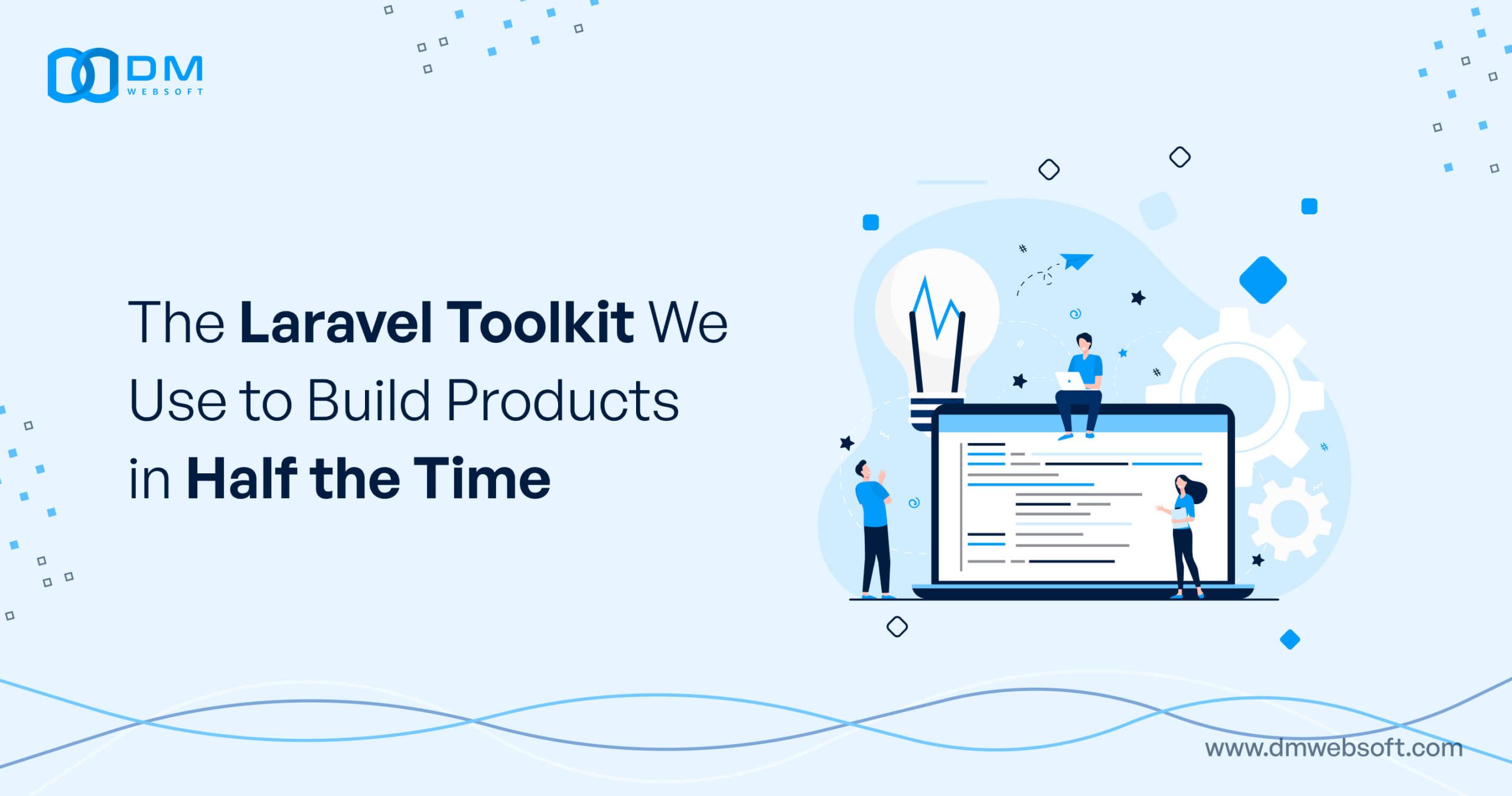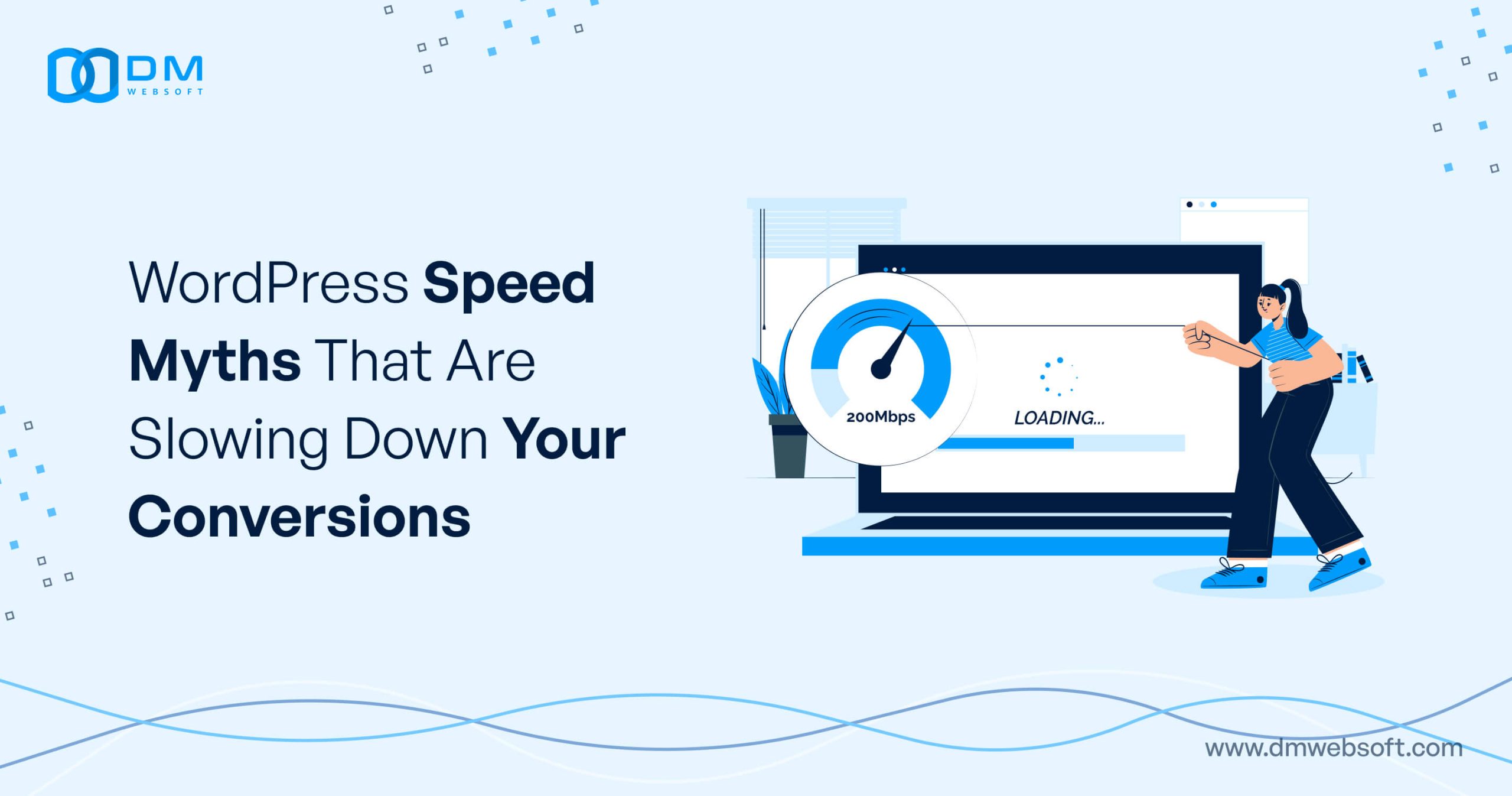DM WebSoft LLP exceeded our expectations! Their seasoned team of experts delivered a website that perfectly captures our brand essence. Their 15+ years of experience truly shine through in their exceptional web development skills.
From Data Lakes to Data Swamps: Best Practices for Data Governance in 2025

TABLE OF CONTENT
Introduction
Data Quality Management in the Era of AI
Automated Metadata Management and Data Cataloging
Federated Governance Models for Distributed Data Environments
Automated Policy Enforcement and Compliance Management
DataOps and Observability for Governance at Scale
The Integrated Approach: Governance as a Value Multiplier
Accelerating Business Outcomes through Proactive Data Governance
Fostering Data-Driven Innovation through Integrated Governance
Conclusion: Transforming Data Swamps into Strategic Assets
Get in Touch
Introduction

In today’s digital economy, business organizations are generating more data than ever before—from customer interactions and business metrics to market data and IoT sensors. The data boom held out the promise of revolutionary decision-making and delivering rich insights, prompting a slew of investment in data lakes and other bulk storage technologies by companies. The truth, though, has oftentimes been more disappointing than dreams, with companies observing their deliberately engineered data lakes degrade into foggy, inedible swamps of information.
The cost of bad data governance is ever-growing. The latest studies find that companies spend $12.9 million each year on poor-quality data, while data practitioners indicate that they waste as much as 50% of their time merely finding, validating, and preparing data instead of drawing insights from it. Since requirements for regulation keep increasing and needs for AI implementation require better-quality data, data governance effectiveness gaps have emerged as a key determinant of competitiveness.
At DM WebSoft LLP, we assist organizations in turning data messes into strategic assets with full-stack data governance solutions. In this blog post, we’ll explore five necessary dimensions of new-generation data governance, providing actionable best practices to avoid data lake degradation and achieve the maximum value from your data assets in 2025 and beyond.
Data Quality Management in the Era of AI

As machine learning and artificial intelligence become central to business processes, data quality has shifted from a technical issue to a strategic necessity. The old saying garbage in, garbage out has never been truer, with AI systems magnifying both the value of high-quality data and the risks of low-quality information.
Good data quality management starts with in-depth profiling and evaluation. There are automated monitoring facilities that must be set up by organizations to constantly measure data against key quality parameters: accuracy, completeness, consistency, timeliness, uniqueness, and validity. Top-performing organizations now have data quality scoring models which deliver quantitative scores across these parameters, allowing objective quantification of data assets and quality trends over time.
The payback from investment in effective data quality management is significant. Research has established that companies with mature data quality processes have 30-40% more accurate predictive models, 25-35% less decision delay, and 15-20% lower data management costs than those employing ad hoc methods. The advantages flow directly into business outcomes, with good-quality data enabling more precise targeting of customers, more efficient operations, and more precise forecasting.
One of the critical advancements in managing data quality is shifting from being reactive cleanup to proactive prevention. Rather than taking a quality issues approach after the data reaches the lake, the best-in-class companies implement quality gates at ingest points, having automated validation against business rules before loading into the ecosystem. Such an approach tends to reduce quality issues by 60-70% and heavily reduces the resources invested in remediation of the data.
Metadata-quality management is another key innovation. By adding rich metadata—data describing its origin, lineage, processing history, and quality properties—to data, organizations build self-documenting data assets that retain their integrity from data creation to its eventual decommissioning. Such a metadata base not only enhances the useability of data immediately but also facilitates more advanced governance features such as policy automation and impact analysis.
At DM WebSoft LLP, we impose stringent data quality mechanisms that work in conjunction with your existing data infrastructure to monitor regularly, measure, and improve information assets. Our process includes quality scoring using automation, ingestion-point validation, and metadata enrichment to prevent depreciation of quality over time. Our clients implementing our quality management system consistently experience 40-60% improvement in data usability scores and 50-70% reduction in quality-related issues.
Automated Metadata Management and Data Cataloging
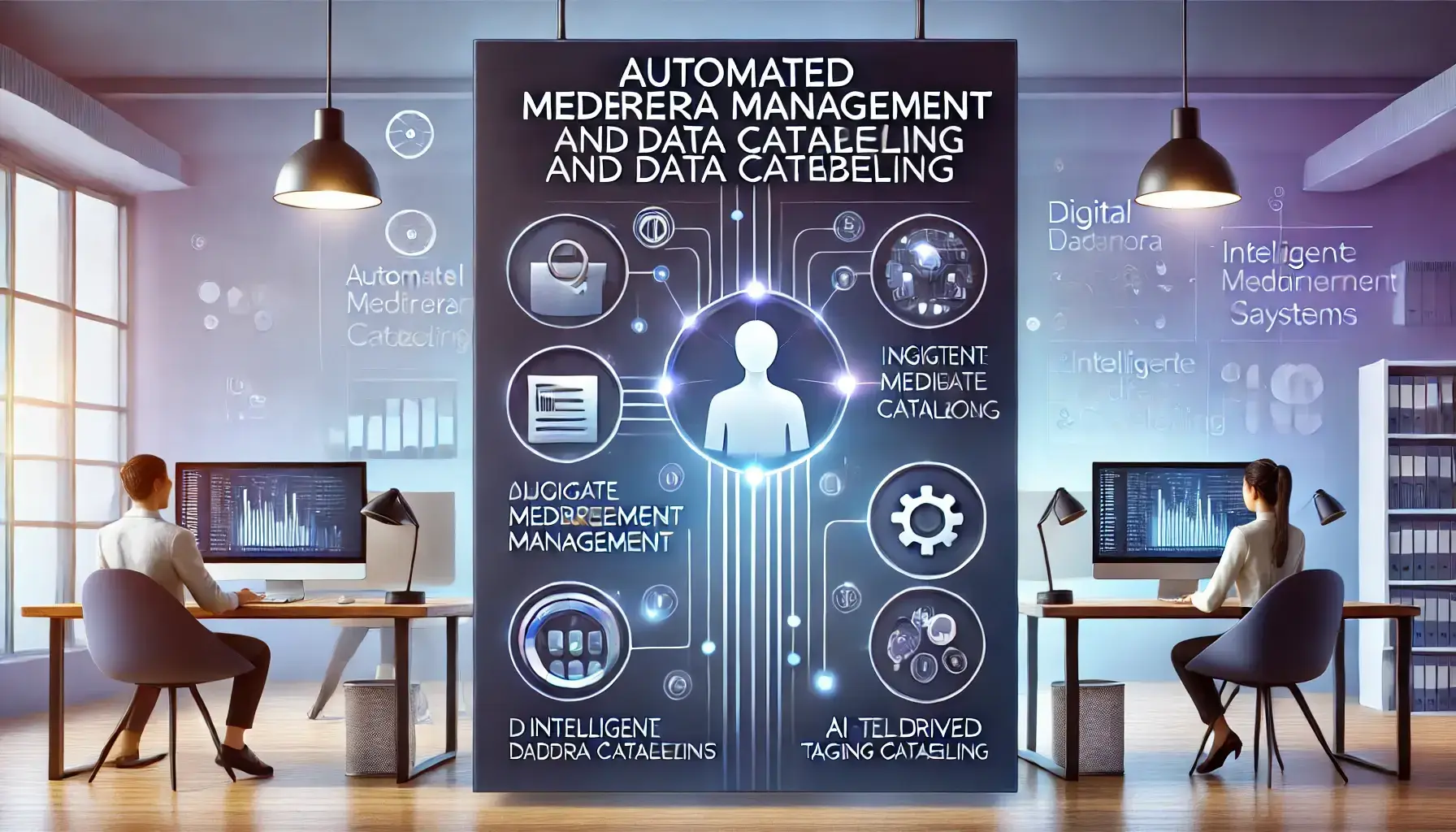
With more complex data environments, metadata management and data cataloging have become core capabilities of good governance. Without complete visibility into what data is out there, where it lives, and how it ties to business use cases, the most advanced data lake rapidly deteriorates into an unusable swamp.
Advanced metadata management does more than simple technical documentation to provide rich, contextual information on data assets. These comprise business metadata (relation of data to business concepts and procedures), technical metadata (structure, format, and storage), operational metadata (use patterns, history of processing), and administrative metadata (compliance requirements, permissions, ownership). Organizations consolidate all these facets and establish an exhaustive image of the data landscape so that both business and technical users can find and use information assets in a more efficient way.
Automation has revolutionized the metadata management process, overcoming the scalability issues that sank so many previous attempts. Machine learning-based data discovery tools can now search data environments to automatically discover, classify, and catalog data assets, extracting schema details, identifying sensitive data, and determining relationship patterns. These tools generally cut manual cataloging effort by 70-80% and enhance metadata coverage by 40-60% over manual methods.
The commercial impact of successful metadata management is huge.
Organizations that have mature cataloging in place realize 60-70% reductions in new analytics project time-to-insight, 30-40% productivity gains by analysts, and 25-35% reduction in redundant storage of data. In addition, detailed metadata management facilitates more advanced data governance capabilities such as automatic policy enforcement, lineage tracking, and impact analysis.
Collaborative curation is now a necessary complement to automated discovery. Via workflows that allow business users to add business context, usage examples, and quality ratings to technical metadata, organizations create living catalogs that refine themselves over time through collective intelligence. This social component increases catalog adoption by 40-50% above technically driven implementations on their own.
At DM WebSoft LLP, we implement metadata management solutions that combine automated discovery with collaborative curation to generate comprehensive, business-friendly data catalogs. Our solution applies machine learning to automate the capture of technical metadata while specifying governance workflows that provide business context to assets. Organizations implementing our metadata management framework typically reduce time-to-insight by 50-60% and increase self-service analytics adoption by 30-45%.
Federated Governance Models for Distributed Data Environments
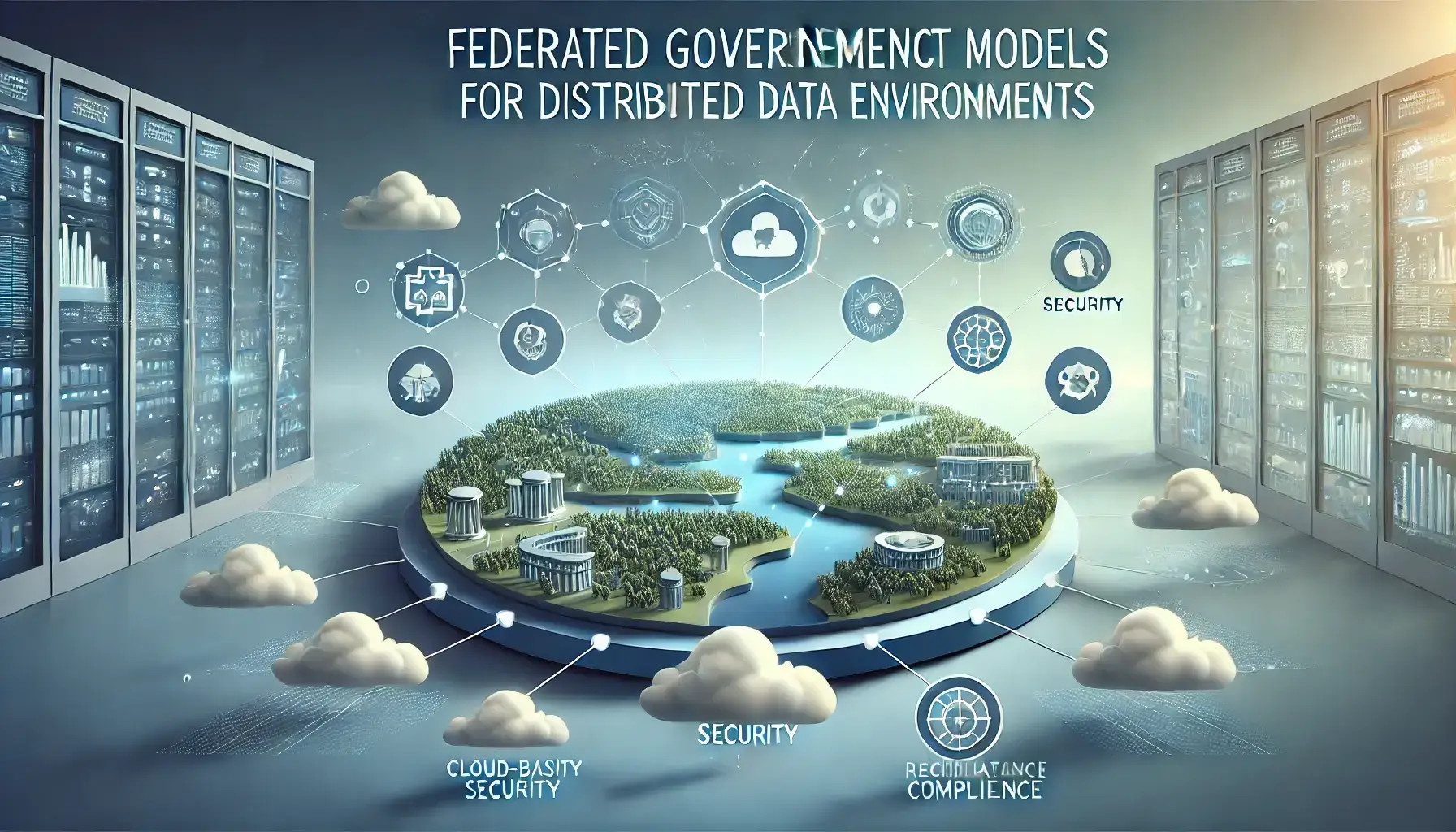
As data environments become more distributed across cloud platforms, SaaS applications, and edge computing systems, the old centralized governance models are no longer adequate. Contemporary organizations need federated models that balance enterprise standards with domain-specific flexibility.
The federated governance model creates a tiered structure for data management responsibilities.
Enterprise-level organizations establish foundational policies, standards, and architectural principles that allow for consistency, interoperability, and compliance. Domain-level business units retain control over domain-based data assets while complying with guardrails set by the enterprise. This balanced framework generally enhances adoption of governance by 40-50% over purely centralized approaches, and enhances time-to-value for domain-specific programs by 30-40%.
Cross-domain data governance councils are critical to successful federation. These councils consist of representatives from business domains, IT, security, legal, and compliance functions that come together to define common policies and solve cross-domain problems. Organizations with mature governance councils experience 50-60% fewer data-related compliance breaches and 30-40% quicker resolution of cross-domain data issues than organizations with siloed governance.
Technology enablement for federated governance has come a long way. Today’s data catalogs can offer domain-specific views and workflows along with enterprise-wide discovery. Policy engines are able to automatically enforce global rules as well as domain-specific rules across distributed environments. And collaboration platforms allow cross-domain governance teams to collaborate effectively despite organizational and geographic spread.
Most significantly, federated models more closely fit today’s organizational design and data architectures. As organizations move toward product-oriented operating models and domain-driven design, the federated approach establishes natural alignment between business responsibility and data ownership. This makes governance more sustainable by integrating it into existing organizational design instead of overlaying it as an independent framework.
At DM WebSoft LLP, we assist organizations in creating and deploying federated governance models that suit their unique organizational designs and data architectures. Our method sets firm enterprise standards while granting domains the autonomy they require for efficient functioning. Customers adopting our federated governance model usually realize 45-60% greater governance adoption rates and 30-45% shorter time-to-value for domain-specific data projects than centralized governance methods.
Automated Policy Enforcement and Compliance Management
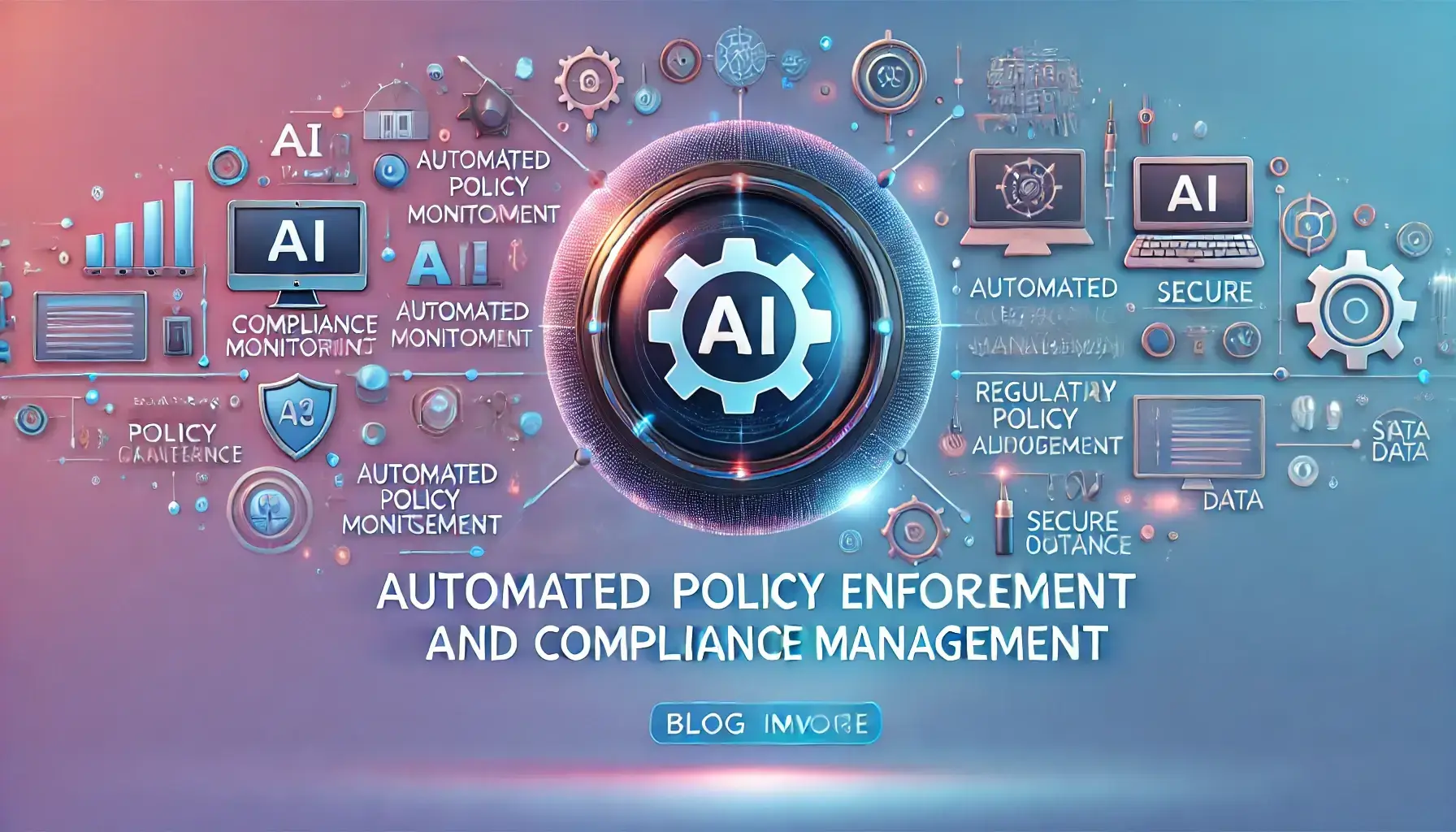
As regulatory demands become more sophisticated and data privacy issues become more pressing, manual compliance management has become increasingly untenable. Top organizations are moving towards automated policy enforcement paradigms that integrate compliance into data infrastructure.
The basis of automated policy compliance is the mapping of regulatory obligations and internal policies into machine-executable rules. By transforming abstract compliance requirements into concrete, actionable policies, organizations can apply them systematically across their data domain. Such a translation process generally involves collaboration between legal professionals, data governance staff, and technical implementers to provide both regulatory fidelity and technical viability.
After defining policies, policy enforcement points need to be implemented across the data environment. These enforcement points happen at various levels: managing access to data (who gets to view what data), data transfer (where data can move), data processing (how data can be changed), and data life cycle (for how long data is stored). Through enforcing norms at all these aspects uniformly, organizations achieve end-to-end compliance coverage that evolves with changing needs.
The organizational effect of automated policy enforcement is significant. Organizations with mature automation say they achieve 60-70% fewer incidents of compliance, 40-50% fewer hours spent on preparing for audits, and 30-40% less compliance management expense compared to manual processes. Moreover, automated enforcement improves the user experience by providing instant feedback on policy violations rather than post facto corrections.
Real-time alerting and monitoring constitute another crucial part of modern compliance management. Constant monitoring of data activities to meet requirements allows organizations to capture prospective abuse prior to it maturing into severe issues. Advanced systems are applying machine learning in order to find unusual patterns that might signify compliance risk even though they don’t breach established rules per se.
In DM WebSoft LLP, we employ policy automation platforms that translate compliance obligations into regulated controls on your data terrain. Our approach combines policy definition, deployment, monitoring, and adjustment into an open-looped process that acclimates to dynamic regulatory environments. Firms with our compliance automation tool typically reduce policy violations by 55-70% while decreasing compliance management expenses by 30-45%.
DataOps and Observability for Governance at Scale
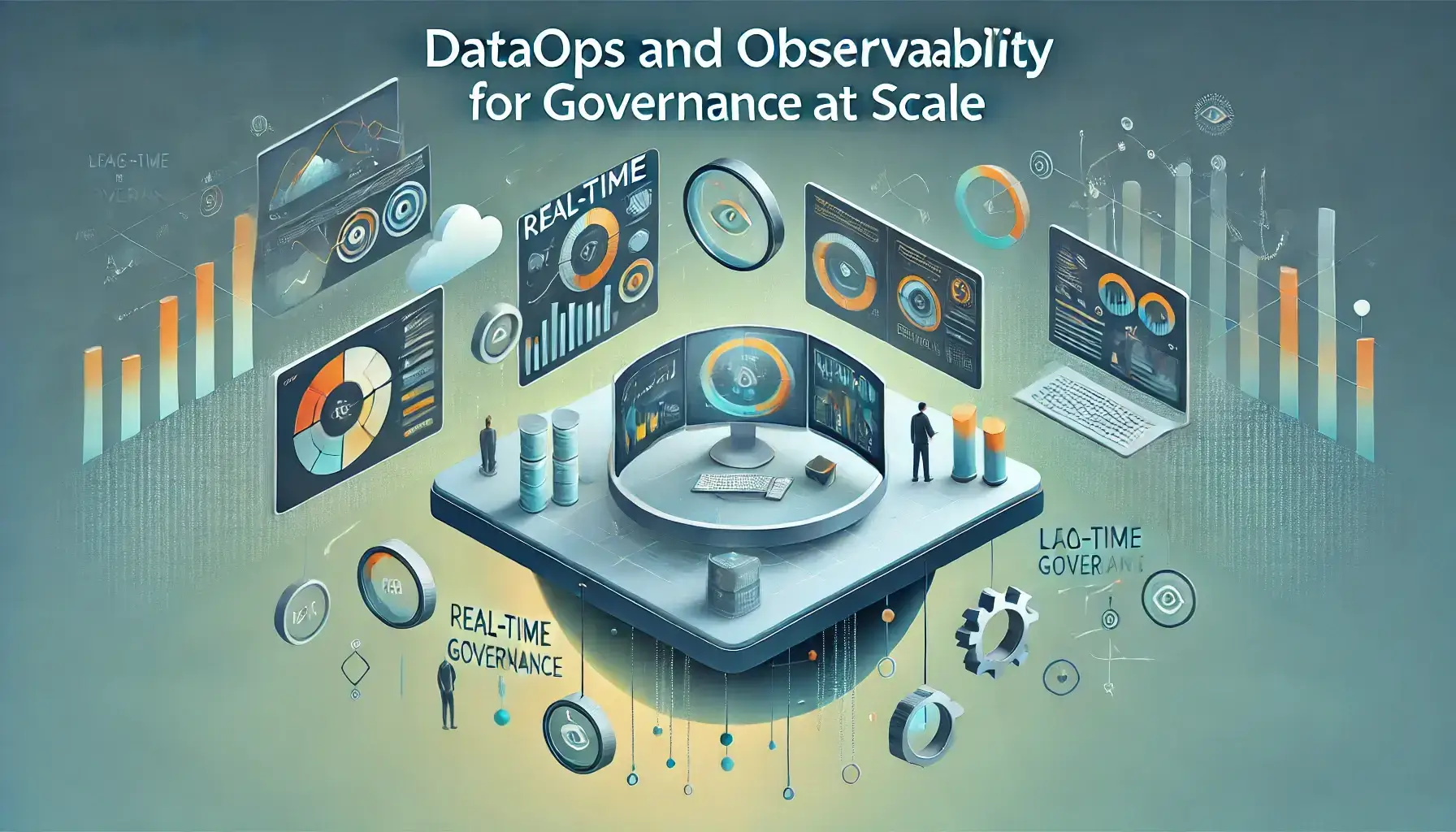
As data estates become larger and more complex, the traditionally labour-intensive forms of governance become impractically infeasible. End-to-end observability processes and DataOps best practices are being embraced by forward-looking firms in order to provide scale governance.
DataOps extends DevOps principles to data, with a need for automation, cooperation, and constant optimization along the data life cycle.
With automated deployment, testing, and monitoring of data pipelines, organizations can maintain governance standards as volumes and velocity are scaled. Research suggests that highly mature DataOps adoption would reduce governance-related issues by 50-60% and accelerate time-to-delivery on new data products by 30-40%.
Data observability makes it possible for users to observe comprehensively across the whole enterprise with data asset visibility to use, quality, and health. The technology is a giant leap over regular monitoring in creating an end-to-end picture of data movement across systems, changes over time, and its effects on business processes. By implementing observability across metadata, quality, lineage, usage, and performance dimensions, organizations gain early warning of potential governance issues before they impact downstream systems.
Automated tracking and documentation of lineage are fundamental components of scalable governance. By automatically capturing origins, transformations, and dependencies of data, organizations create self-documenting data landscapes that are comprehensible even as they grow and change.
Automated documentation commonly saves documentation effort by 70-80% and raises documentation coverage by 40-60% compared to manual methods.
Governance-as-code has been a main driver of data scalability management. Through the coding of governance policy and controls as opposed to procedures or documents, organizations are able to version, test, and deploy governance controls in conjunction with data infrastructure automatically. Governance is therefore kept current with the data environment and does not fall behind technology advancements.
At DM WebSoft LLP, we assist organizations in applying DataOps principles and observability practices that support governance at scale. Our solution creates automated pipeline testing, full-stack monitoring, and governance-as-code adoption to have control even in sophisticated, high-velocity setups. Customers who apply our DataOps governance model tend to have 45-60% incident reduction on the governance side while improving the rate of data innovation by 30-40%.
The Integrated Approach: Governance as a Value Multiplier
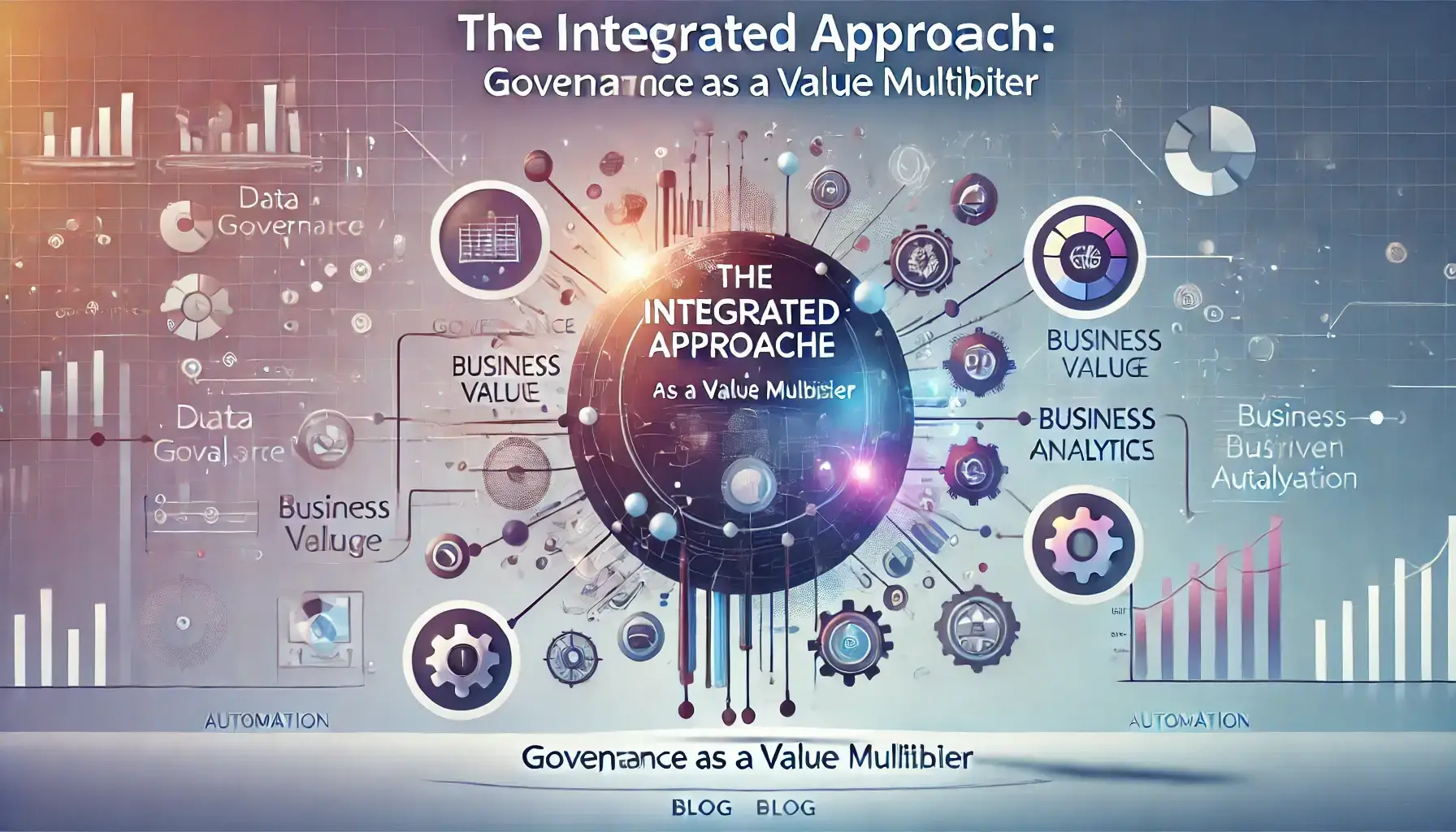
Although studying single aspects of data governance yields significant findings, the most effective organizations understand that unified governance frameworks yield exponentially more value than standalone initiatives. By linking quality, metadata, federation, policy enforcement, and operational capabilities into an integrated system, organizations turn governance from a cost of compliance into a value multiplier.
The integrated method starts with a common operating model that links governance activities to business goals. Instead of using governance as a standalone function, top-performing organizations integrate it into their data product development cycle so governance needs are met from development initiation to daily operation. Integration normally increases adoption of governance by 50-60% and speeds up time-to-value for data initiatives by 30-40%.
Technology integration constitutes another key component of the unified strategy. With the adoption of interoperable platforms for catalogs, quality, policy enforcement, and lineage tracking, organizations develop integrated workflows that make both efficiency and effectiveness improve. This technical unification decreases governance friction by 40-50% against disparate point solutions while enhancing visibility within previously siloed domains.
Most critically perhaps, integrated governance facilitates a transition from defense-oriented to offense-oriented data strategy. While traditional governance mainly concentrated on risk reduction, newer models also prioritize value generation via enhanced data accessibility, usability, and trust equally. Mature integrated governance organizations have 40-50% greater utilization of data assets and 30-40% quicker creation of new data products than compliance-driven practices.
The commercial benefits of this joined-up strategy are significant. A survey found that organizations with established, integrated governance models gain 3.2x greater return on investment on their information investments than organizations with fragmented or limited governance. This performance difference is driven by both lower costs (fewer errors, less rework, more streamlined operations) and higher value creation (improved decision-making, increased innovation, quicker time-to-market).
At DM WebSoft LLP, we assist organizations in creating integrated governance models that align people, processes, and technology into sustainable systems. Our method integrates governance capabilities with business goals to drive value-based data management practices that facilitate innovation instead of hindering it. Customers deploying our integrated governance model commonly realize 40-55% increases in data value realization with a 30-45% decrease in governance-related frictions.
Accelerating Business Outcomes through Proactive Data Governance
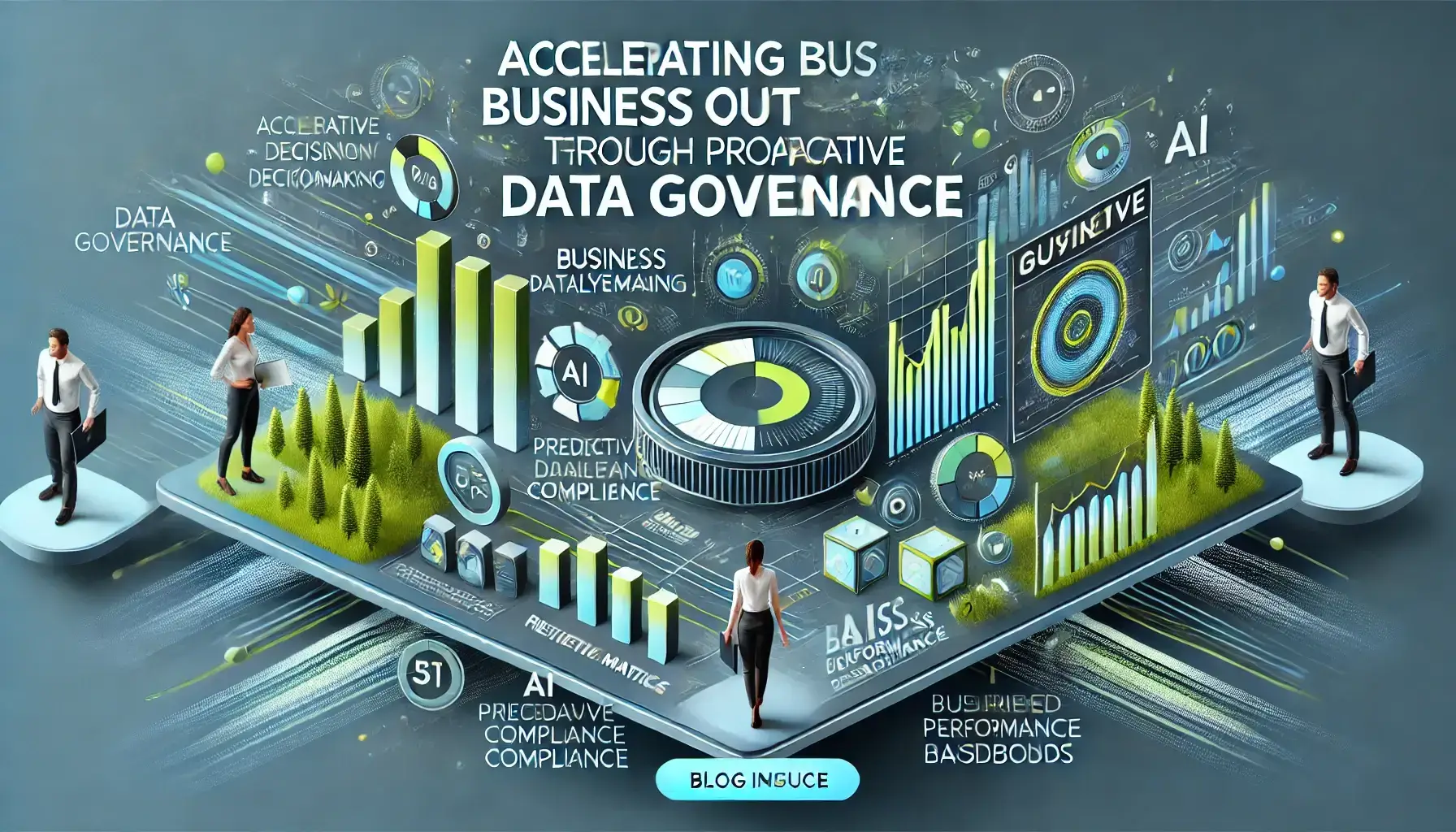
As data-driven decision-making becomes more necessary, organizations are not just tasked with controlling risk but also leveraging data as a strategic resource. An integrated governance model allows organizations to proactively drive business outcomes by making data more actionable, accurate, and accessible. By embedding governance within the business process itself, rather than after analysis or in remedial form, organizations create a more nimble response to market demands, customer needs, and regulatory obligations.
A core element of this forward-looking strategy is the alignment of data governance with key business functions such as marketing, product innovation, and customer experience. By linking governance to these functions directly, organizations can provide data in an easily accessible and business-aligned state, enhancing operational effectiveness and accuracy in decision-making. This close integration minimizes time spent addressing data discrepancies or compliance issues, enabling teams to concentrate on high-value activities that promote growth.
When data governance is closely aligned with business operations, organizations achieve meaningful decreases in business delays and decision-making bottlenecks, responding 20-30% quicker to changing business conditions. Furthermore, organizations commonly see a 50-60% boost in employee productivity when data quality enhances and operational silos decrease. Finally, this forward-thinking approach to governance shifts from reducing risk to creating maximum value, achieving a powerful competitive advantage.
Fostering Data-Driven Innovation through Integrated Governance
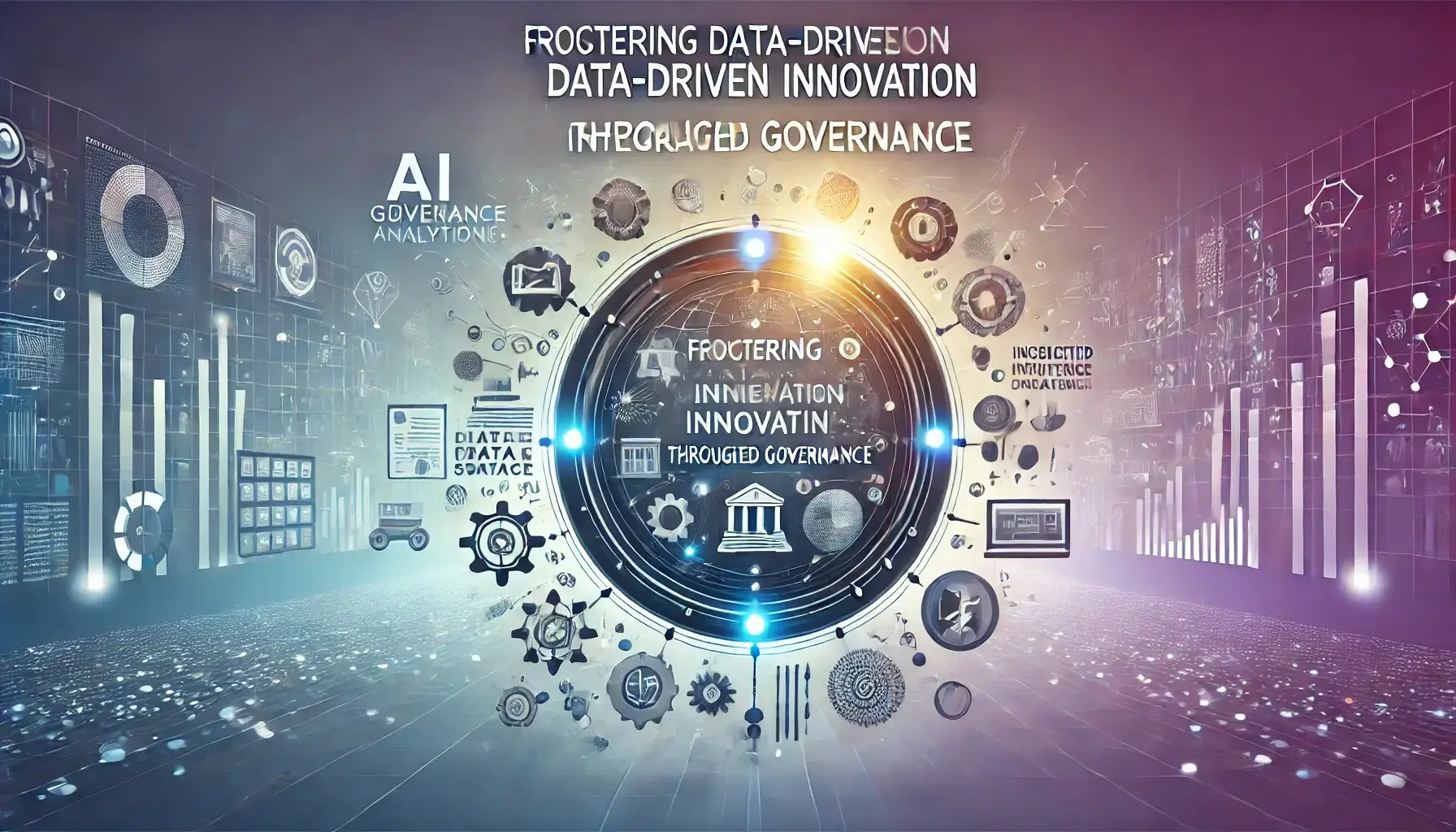
In the world of rapid fire in today’s digital age, innovation is what separates companies that will lead and those that will lag. Yet innovation can be strangled by overly rigid and unconnected data governance or not aligning governance with the larger business strategy. A holistic approach to governance establishes a platform for ongoing innovation as it ensures data is governed so it can fuel experimentation, iteration, and scaled growth.
By using a nimble, integrated model of governance, organizations can develop a setting where information moves freely between departments, where teams can play with new ideas and technologies without risking compliance errors or dissimilar data. This governance model with movement creates space for innovation by data scientists, analysts, and developers so that appropriate controls are in effect to support regulatory and security demands. Consequently, the company can cut down time-to-market for new services and products by 30-50%.
Furthermore, companies with highly evolved, integrated systems of governance have 40-50% better success with innovation. When governed within the data lifecycle, data sharing is under control, access is manageable, and privacy is possible—promoting a collaborative culture that fuels faster, safer innovation. Integrated governance is an effective driver for companies committed to pushing the edges of their market.
Conclusion: Transforming Data Swamps into Strategic Assets
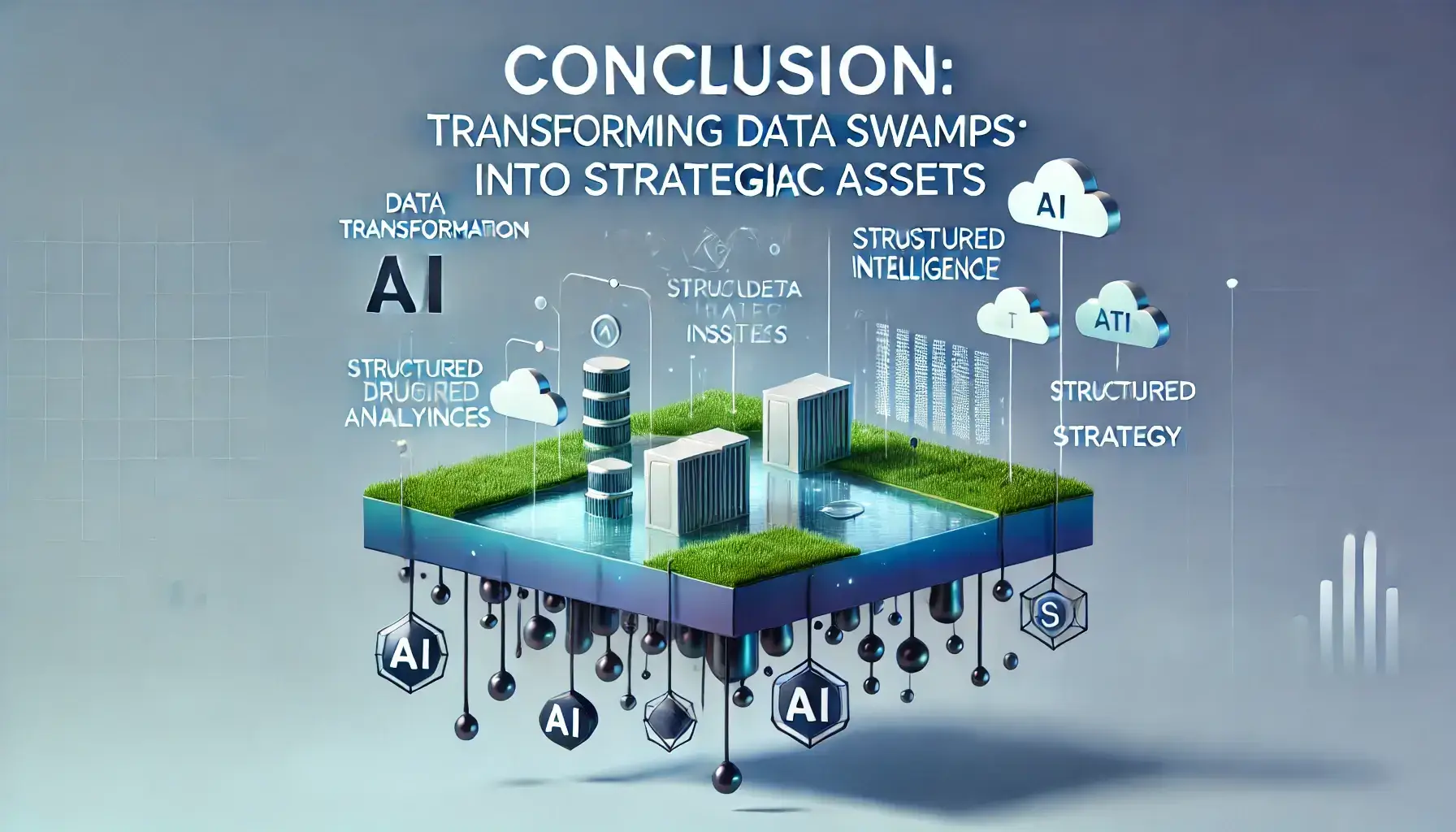
As we work through the sophisticated data environment of 2025, the distinction between companies being overwhelmed by data swamps and companies using strategic data assets hinges more and more on governance efficiency. By instituting strong, combined governance structures, companies can not only avoid degradation of their data but actively create added value from their information assets.
Effective governance in 2025 needs a multidimensional solution:
- Quality management patterns that guarantee data reliability for business-critical decision-making and AI use cases
- Metadata management automated to make data discoverable, understandable, and contextual
- Federated models of governance blending enterprise standards with domain-based flexibility
- Automated policy enforcement that integrates compliance with data infrastructure
- DataOps and observability practices empowering governance at scale
Those organizations that are excellent across these areas accomplish what we refer to as governed data excellence—contexts in which high-quality, properly documented data assets circulate securely throughout the enterprise, supporting innovation and compliance. As we work through the sophisticated data environment of 2025, the distinction between companies being overwhelmed by data swamps and companies using strategic data assets hinges more and more on governance efficiency. By instituting strong, combined governance structures, companies can not only avoid degradation of their data but actively create added value from their information assets.
Effective governance in 2025 needs a multidimensional solution:
- Quality management patterns that guarantee data reliability for business-critical decision-making and AI use cases
- Metadata management automated to make data discoverable, understandable, and contextual
- Federated models of governance blending enterprise standards with domain-based flexibility
- Automated policy enforcement that integrates compliance with data infrastructure
- DataOps and observability practices empowering governance at scale
Those organizations that are excellent across these areas accomplish what we refer to as governed data excellence—contexts in which high-quality, properly documented data assets circulate securely throughout the enterprise, supporting innovation and compliance. This excellence forms the basis for advanced analytics, reliable AI, and decision-making based on data that fuels competitive differentiation.
As volumes of data expand and regimes of regulation evolve, the strategic value of successful governance will increase even more. Those organizations that develop advanced capabilities for governance now set themselves up for long-term success in a more data-based business environment.
At DM WebSoft LLP, we are experts at assisting organizations to turn data swamps into strategic assets by designing end-to-end governance frameworks. Our services cover all aspects of contemporary data governance, from metadata management and quality to policy automation and DataOps disciplines. If your organization is beginning with its governance program or needs to enhance capabilities, we have the expertise to help you extract maximum value from your data assets.
Contact DM WebSoft LLP today and discover how our end-to-end data governance plan can transform your information landscape into an asset.
Key indicators include increasing time-to-insight for analysts, declining trust in data-driven decisions, proliferation of inconsistent data copies, difficulty answering basic data lineage questions, and escalating data quality incidents affecting downstream systems.
Organizations with mature data governance typically achieve 30-40% higher accuracy in AI predictions, reduce model development time by 40-50%, and experience 60-70% fewer AI ethics incidents by ensuring high-quality, well-documented training data with appropriate usage controls.
Most successful implementations establish a central data governance office that defines enterprise standards, while empowering domain-specific data stewards embedded within business units. Cross-functional governance councils with representatives from business, IT, legal, and security functions coordinate this federated model.
Effective governance ROI measurement combines direct cost metrics (reduced incidents, efficiency improvements, compliance costs) with value creation indicators (improved decision quality, faster time-to-market, increased data utilization) to create a comprehensive view of governance impact.
DM WebSoft LLP provides comprehensive data governance services including maturity assessment, strategy development, technology implementation, and organizational change management. Our integrated approach helps clients achieve 40-55% improvements in data value realization while reducing governance-related frictions by 30-45%.
Get Started Now !
What’s the Process ?
Request a Call
Consultation Meeting
Crafting a Tailored Proposal
Get Started Now !
Real Stories, Real Results. Discover What Our Clients Say

Working with DM WebSoft LLP was a game-changer for our business. Their technical prowess and innovative solutions transformed our online presence. A highly recommended web development agency with a stellar track record.

We are thrilled with the results DM WebSoft LLP delivered. Their deep understanding of web development coupled with years of expertise ensured a seamless and visually stunning website. True professionals!

In a digital age where first impressions matter, DM WebSoft LLP crafted a website that speaks volumes. The team’s attention to detail and commitment to quality set them apart. Thank you for making our vision a reality.

DM WebSoft LLP’s team demonstrated unparalleled expertise. Their ability to navigate complex technical challenges with ease is truly commendable. Choosing them for our web development needs was the best decision.

Exceptional service, unmatched skills! DM WebSoft LLP stands out as a leading web development agency. Their collaborative approach and commitment to excellence make them our go-to partner for all things web-related.

DM WebSoft LLP turned our ideas into a digital masterpiece. The seamless communication and timely delivery of our project showcased their professionalism. Highly impressed with the level of creativity and skill.

Our experience with DM WebSoft LLP was nothing short of amazing. From concept to execution, their team provided top-notch web development services. A reliable partner for businesses looking to elevate their online presence.

DM WebSoft LLP’s team of tech experts is second to none. Their wealth of experience reflects in the quality of their work. Our website not only meets but exceeds industry standards, thanks to their dedication.

Choosing DM WebSoft LLP was the best investment for our web development needs. Their team’s proficiency, coupled with a customer-centric approach, made the entire process smooth and enjoyable. A pleasure to work with!



